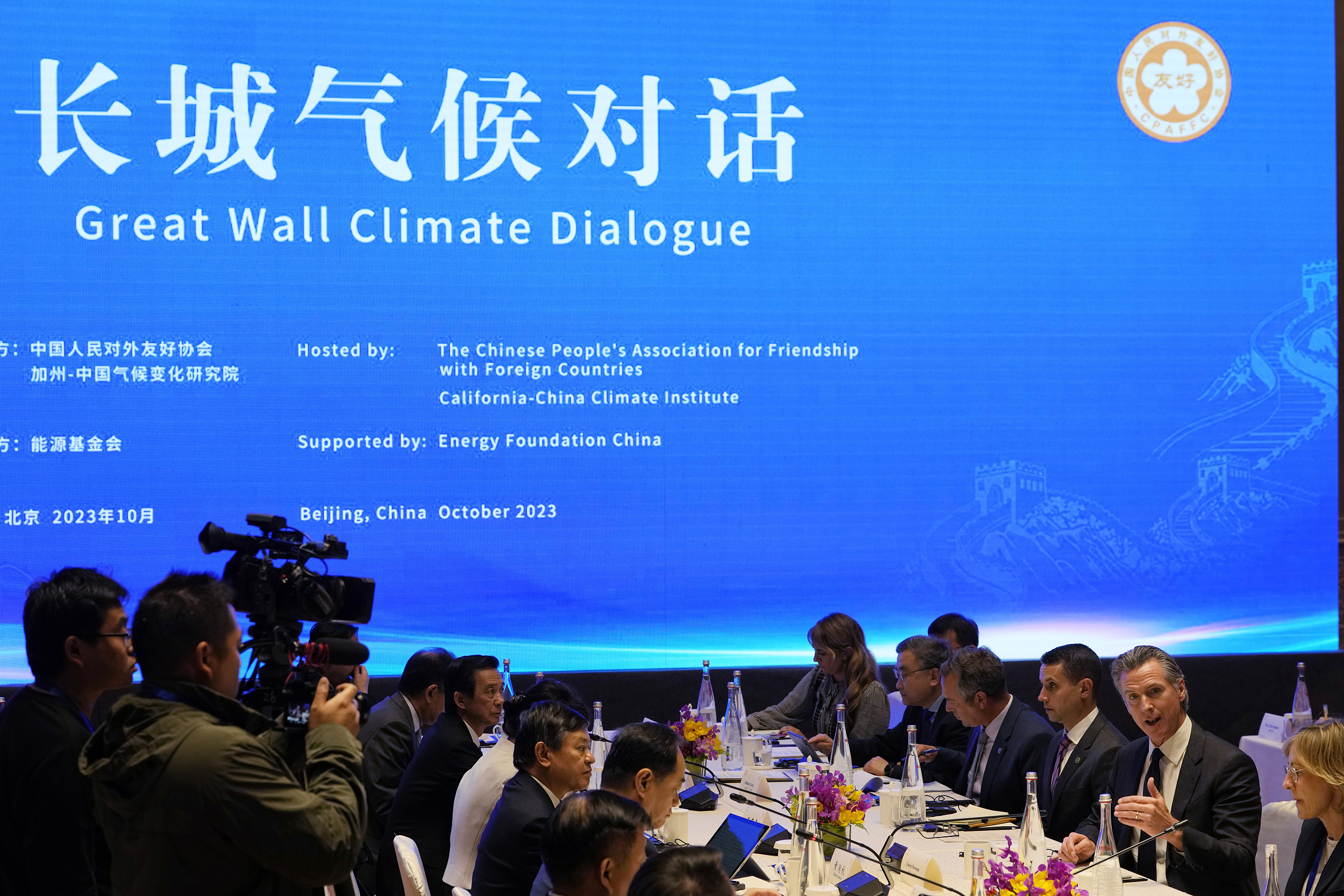China-U.S. Sci-tech Cooperation Needs Repair, Not Persecution

California governor Gavin Newsom(bottom right)speaks during the Great Wall Climate Dialogue held at the Yanqi hotel on the outskirts of Beijing, October 26, 2023. (PHOTO: VCG)
By?TANG?Zhexiao
January 1, 2024 marks the 45th anniversary of the establishment of diplomatic relations between China and the United States. With many highs and lows, the relationship has come a long way over the years.
According to China’s Ministry of Foreign Affairs, bilateral trade surged from less than 2.5 billion USD in 1979 to close to 760 billion USD in 2022, two-way investment increased from almost zero to over 260 billion USD, and 284 pairs of sister provinces, states and cities were set up. The two countries have also carried out many instances of useful cooperation on various global issues.
At the summit meeting in San Francisco last November, President Xi Jinping and President Joe Biden reached over 20 deliverables in such areas as political affairs and foreign policy, trade and finance, people-to-people exchange, global governance, and military and security. They advanced a future-oriented San Francisco vision, which points the way forward for bilateral relations.
The Sunnylands Statement on Enhancing Cooperation to Address the Climate Crisis, jointly issued by China and the U.S. in November 2023, committed to implementing the Paris Agreement, tripling renewable energy capacity globally by 2030, implementing respective national methane action plans, implement technologies and measures to control greenhouse gas emissions and air pollutants, and support climate cooperation between states, provinces, and cities in each country.
The deal puts “some wind in the sails for global climate action,” according to Alan Yu, the senior vice president for National Security and International Policy at American Progress.
The governments of China and the U.S. have been cooperating in areas of science and technology for 35 years, under the 1979 China-US Science and Technology Cooperation Agreement.
Over these years, the Agreement has facilitated a complex government-to-government relationship, consisting of some 30 agency-to-agency protocols and more than 40 active sub-agreements and annexes between the technical agencies of the two countries in a wide range of fields including agriculture, energy, environmental protection, and public health.
Jenny Lee, a professor of higher education at the University of Arizona, told Science Business that the China-U.S. science and technology agreement is “l(fā)argely a gesture of goodwill between the two countries to work together on scientific advancement in ways that benefit both countries.”
Washington temporarily renewed the deal for six months in 2023, with so-called concerns over research data restrictions and national security threats.
Stanford University physicists Steve Kivelson and Peter Michelson argued that the agreement should not lapse. Instead every effort should be made to nurture open and transparent scientific cooperation.
The China-U.S. science cooperation needs repair, not persecution, said the U.S. magazine Scientific American, noting that science plays an enormous unseen role in keeping international avenues of contact open.
One country’s success is an opportunity for the other, and China and the U.S. can help each other succeed and prosper together.
“History shows that the growth of China-US relations not only contributes to the good of the two peoples but also to world peace, stability and development,” remarked China's Foreign Ministry Spokesperson on January 2.






